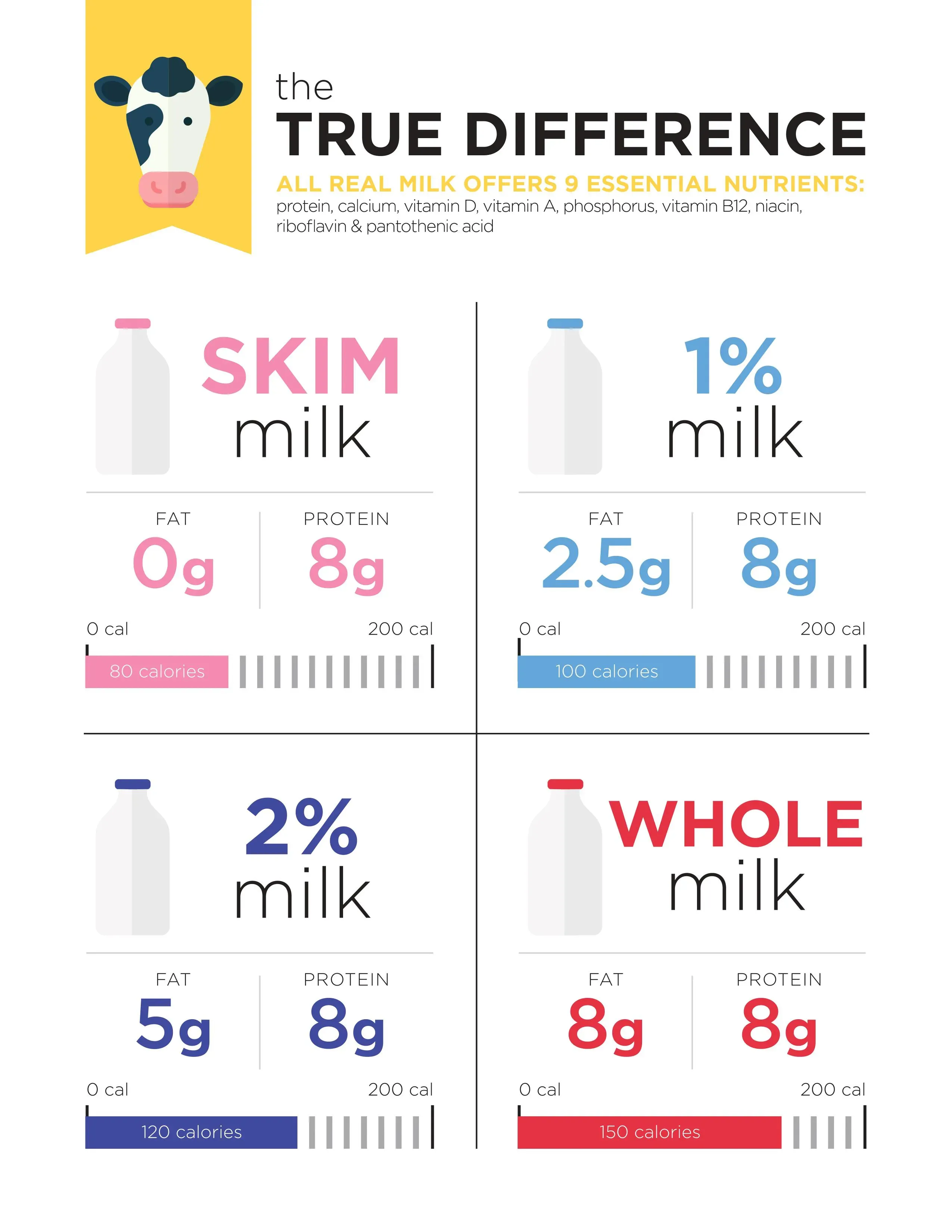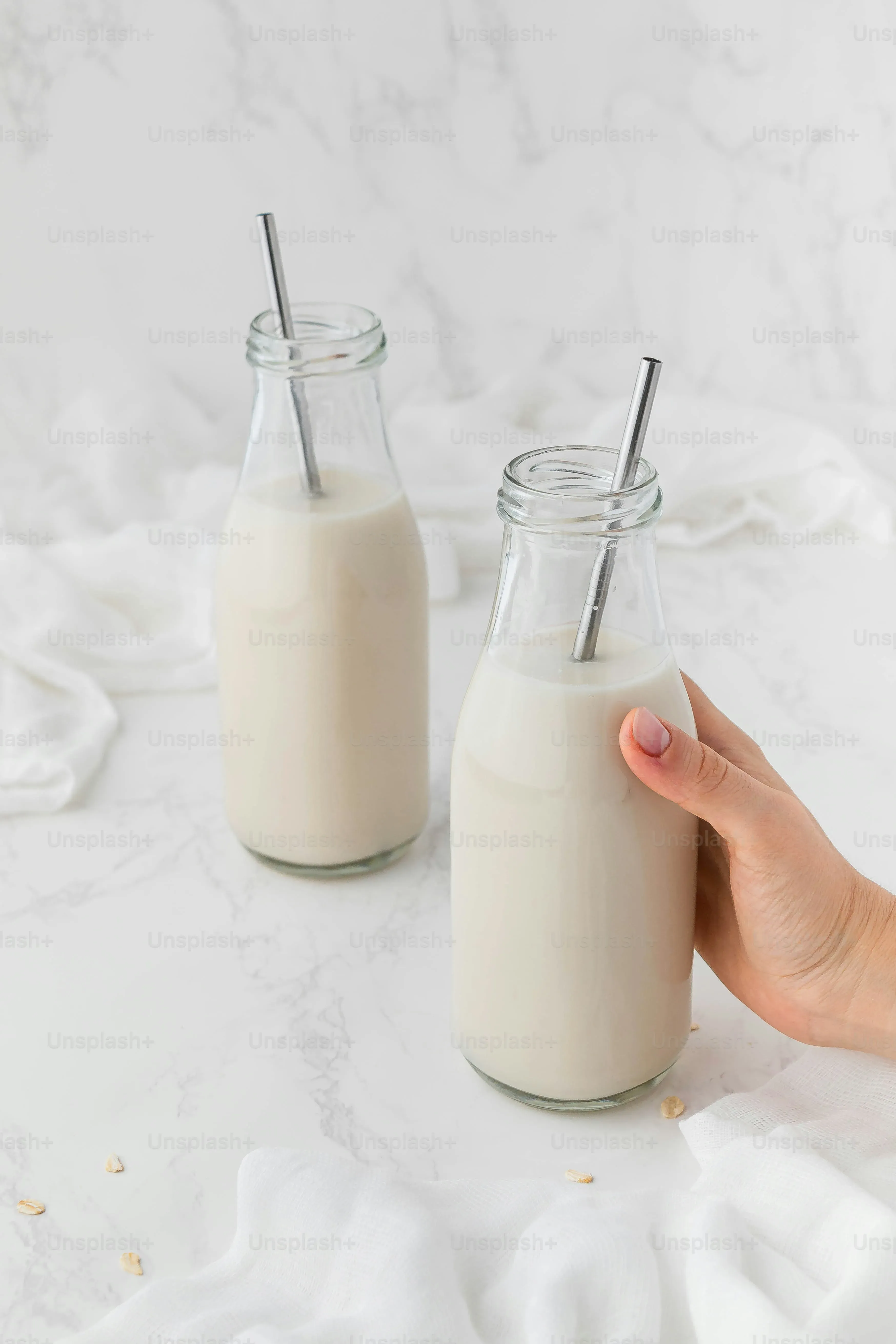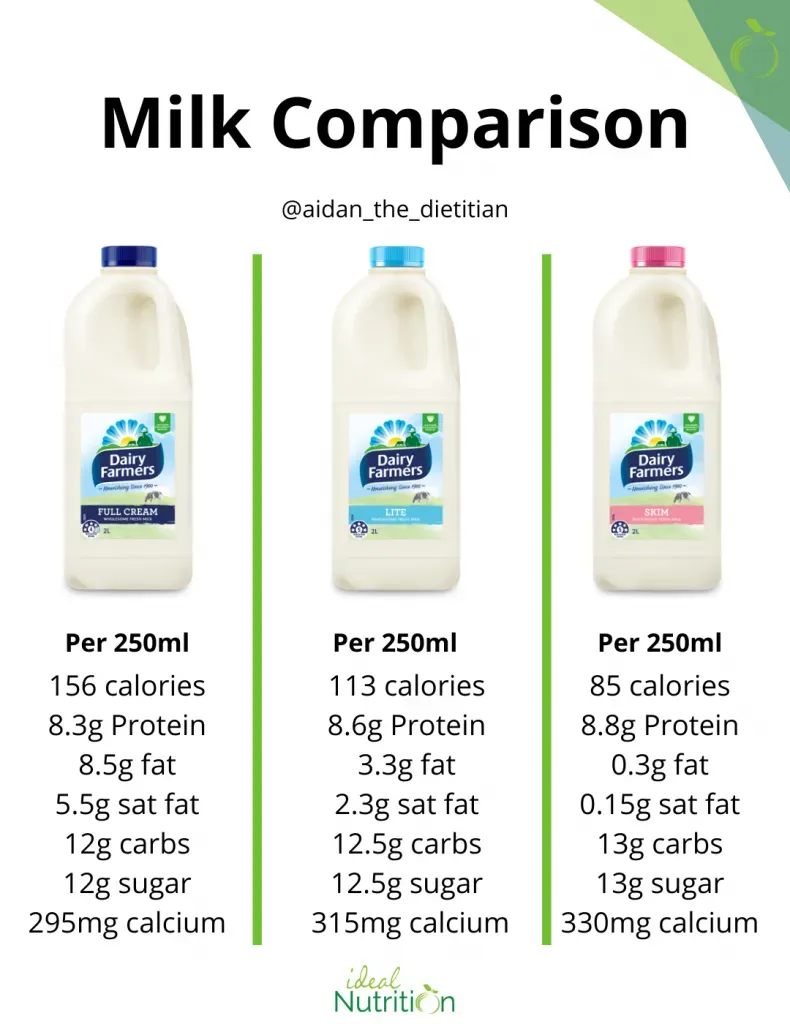Table of Contents
Step into any dairy aisle, and you're faced with a decision that's sparked countless kitchen table debates: full fat or low fat milk? For decades, the prevailing wisdom steered us toward skim or low-fat options, driven by concerns over saturated fat and its perceived link to heart disease. We dutifully poured the watery stuff, believing we were making the "healthy" choice. But lately, the conversation has shifted. New research has muddied the waters, suggesting that maybe, just maybe, full-fat dairy isn't the dietary villain it was once made out to be. This conflicting information leaves many scratching their heads, unsure which carton to reach for. Are those extra calories and fat in whole milk truly detrimental, or do they offer benefits we overlooked? This article dives deep into the facts behind the full fat or low fat milk dilemma, exploring the nutritional differences, the latest scientific findings, and what it all means for your health and your grocery list. We'll break down the complexities, cut through the marketing jargon, and help you understand what's really inside that glass.
The Dairy Debate: Why Full Fat or Low Fat Milk?

The Dairy Debate: Why Full Fat or Low Fat Milk?
The Low-Fat Push: A Shift in Thinking
Remember the 1980s? That's when dietary fat became public enemy number one. The prevailing scientific theory at the time, often called the lipid hypothesis, pointed a finger squarely at saturated fat and cholesterol as major culprits behind heart disease. Suddenly, low-fat and fat-free versions of everything flooded the market. Milk was no exception. Skim milk, once considered a watery afterthought, was elevated to health hero status. The official dietary guidelines from the government reinforced this message, urging Americans to swap their whole milk for the leaner options. We were told it would help control weight and protect our hearts. This advice became deeply ingrained in public consciousness, shaping grocery lists and breakfast tables for decades.
Questioning the Conventional Wisdom: Why the Debate Persists
Fast forward to today, and that clear-cut picture has gotten fuzzy. Scientists have continued studying diet and health, and some of the early assumptions are being re-evaluated. The relationship between dietary fat, particularly saturated fat from sources like dairy, and health outcomes like heart disease and weight gain appears more complex than initially thought. Newer research suggests that the type of fat matters, and perhaps the food source it comes from does too. This is the core of the modern debate around full fat or low fat milk. People are asking if they really need to avoid the richer versions, especially if the perceived benefits aren't as strong as once believed, or if whole milk offers other advantages. The simple "fat is bad" mantra no longer holds the sway it once did.
Here's a quick look at the common types of milk based on fat content:
- Whole Milk: Typically around 3.25% milk fat.
- Reduced-Fat Milk (2%): Contains 2% milk fat.
- Low-Fat Milk (1%): Contains 1% milk fat.
- Fat-Free Milk (Skim): Contains virtually no milk fat (less than 0.5%).
Nutritional Showdown: Comparing Full Fat or Low Fat Milk

Nutritional Showdown: Comparing Full Fat or Low Fat Milk
Calories and Fat: The Headline Numbers
Alright, let's get down to the numbers. When you look at a carton of whole milk versus skim, the most glaring difference is right there on the nutrition label: calories and fat. A standard cup of whole milk clocks in at around 150 calories with about 8 grams of total fat, roughly 5 of which are saturated. Swap that for a cup of fat-free milk, and you're looking at closer to 80 calories and, well, practically no fat. Reduced-fat (2%) and low-fat (1%) milk sit somewhere in the middle, as you'd expect. It’s the most straightforward distinction, the one that fueled the low-fat movement for decades. Less fat equals fewer calories, which seemed like a no-brainer for weight management.
Beyond the Basics: Vitamins and Minerals
But milk isn't just about fat and calories, right? It's a source of a bunch of other good stuff. Both full fat or low fat milk options generally provide the same amount of protein, carbohydrates (lactose), calcium, and vitamin D (since it's often added). Where whole milk pulls ahead, though, is with those vitamins that need fat to be absorbed properly – the fat-soluble crew like vitamins A, D, E, and K. While vitamin D is usually added to all milk types, the naturally occurring amounts of A, E, and K will be higher in whole milk simply because the fat is present. Think of it like needing the right vehicle to deliver the goods; fat is the vehicle for these particular vitamins.
So, while the calorie count drops, you might miss out on some of the naturally occurring micronutrients found alongside the fat.
Nutrient (per 1 cup) | Whole Milk (approx.) | Fat-Free Milk (approx.) |
|---|---|---|
Calories | 150 | 80 |
Total Fat | 8g | 0.2g |
Saturated Fat | 5g | 0.1g |
Protein | 8g | 8g |
Calcium | 300mg | 300mg |
Vitamin D | 2.5mcg | 2.5mcg |
Diving Deeper: The Type of Fat Matters?
Now, let's talk about the fat itself. Yes, whole milk has saturated fat, which was the big bogeyman. But dairy fat isn't just one simple thing; it's a complex mix of hundreds of different fatty acids. Some research suggests that certain fatty acids in dairy might actually have neutral or even slightly beneficial effects on heart health markers, contradicting the old "all saturated fat is bad" rule. Plus, there's the concept of the "food matrix" – how nutrients are packaged within the whole food might influence how our bodies process them. The fat in whole milk might affect satiety (how full you feel) or the absorption of other nutrients in ways that isolated fat or the absence of fat doesn't. It's not as simple as just subtracting grams of fat from the equation.
This complexity is why the debate over full fat or low fat milk isn't just about glancing at calorie counts anymore.
Beyond the Fat: Research on Full Fat vs. Low Fat Milk and Health

Beyond the Fat: Research on Full Fat vs. Low Fat Milk and Health
The Saturated Fat Redemption Arc?
For years, saturated fat was the dietary boogeyman, and dairy, especially the full-fat kind, was Public Enemy No. 1. The narrative was simple: saturated fat raises cholesterol, which clogs arteries and causes heart attacks. Avoid it at all costs. This led to a mass migration towards low-fat and fat-free milk. But science rarely stays settled for long. More recent, robust studies have started painting a more nuanced picture. The simple linear equation of "saturated fat in equals heart disease out" seems... well, too simple. Researchers are finding that the effects of saturated fat might depend on the food source it comes from and the overall dietary pattern. Dairy fat, specifically, contains a complex mix of fatty acids, some of which might not behave the same way as saturated fat from, say, a greasy burger. Some studies even suggest a neutral or inverse association between full-fat dairy consumption and cardiovascular risk factors.
It's not a free pass to guzzle cream, but it certainly challenges the decades-old dogma that low-fat is always superior for heart health.
Weighty Matters: Full Fat, Low Fat, and Your Waistline
Here's another curveball: remember how low-fat milk was supposed to be the key to staying slim? Logic dictated fewer calories and less fat meant less weight gain. Yet, observational studies haven't consistently borne this out. Some research indicates that people who consume full-fat dairy don't necessarily gain more weight or have a higher risk of obesity than those who stick to low-fat versions. In fact, a few studies have even linked full-fat dairy intake to a lower risk of type 2 diabetes and better weight management over time. How could this be? One theory points to satiety. The fat in whole milk might help you feel fuller for longer, potentially leading you to eat less overall throughout the day. Another angle considers those fat-soluble vitamins or other bioactive compounds in full-fat dairy that might play a role in metabolic health. It's a head-scratcher for those who grew up counting fat grams religiously.
It seems the relationship between dairy fat and body weight isn't just about calorie density.
Research Focus | Traditional View (Low-Fat Favored) | Emerging Research (More Nuance) |
|---|---|---|
Heart Disease | Saturated fat in dairy increases risk. | Association less clear, potentially neutral or inverse depending on dairy type/context. |
Weight Management | Lower fat = fewer calories = less weight gain. | Full-fat dairy not consistently linked to higher weight; some studies suggest neutral/lower risk of obesity/diabetes. |
Nutrient Absorption | Fat-soluble vitamins (A, D, E, K) are present in fortified skim milk. | Naturally occurring fat-soluble vitamins higher in whole milk; fat matrix may enhance absorption of other nutrients. |
Beyond the Obvious: Other Potential Health Connections
The research into full fat or low fat milk extends beyond just heart health and weight. Scientists are looking at dairy's role in everything from bone health (calcium and vitamin D are key here, present in both types) to gut health and even certain types of cancer risk. The picture remains complex and sometimes contradictory, but the simple binary of "good" low-fat and "bad" full-fat is dissolving. Some studies explore the impact of fermented dairy (like yogurt and cheese, which also come in various fat levels) and how fermentation might alter the health effects compared to fluid milk. The dairy matrix, those hundreds of different fatty acids, proteins, and micronutrients packaged together, is now a major area of interest. It's becoming increasingly clear that you can't just isolate one nutrient, like saturated fat, and predict the health outcome of consuming the whole food.
It forces us to think about food not just as a collection of isolated nutrients, but as a complex system.
Making Your Choice: Navigating Dairy in Your Diet
Listening to Your Body and Your Preferences
so we've waded through the science, the calories, and the types of fat. Now comes the practical part: what milk do you actually pour into your coffee or cereal? The truth is, there's no single answer that fits everyone. Your personal health goals, any dietary restrictions or sensitivities you have, and frankly, what you actually *like* all play a huge role. If you're closely managing calorie intake for weight loss, the lower-calorie options like skim or 1% might seem like the obvious pick based purely on the numbers. But if you find that a glass of whole milk keeps you feeling satisfied longer, preventing you from snacking on less healthy things later, maybe the slightly higher calorie count is a worthwhile trade-off. Taste and texture matter too. Some people simply can't stand the thinness of skim milk, while others find whole milk too heavy. Don't discount your own experience; your body often gives you clues.
Balancing Dairy with Your Overall Plate
Thinking about full fat or low fat milk shouldn't happen in a vacuum. It's about how dairy fits into your entire diet. Are you getting saturated fat from other sources like meat, butter, or processed foods? If so, choosing lower-fat dairy might help keep your total saturated fat intake within recommended limits (which, yes, still exist, though the numbers are debated). If your diet is otherwise lean and packed with fruits, vegetables, and whole grains, a bit of full-fat dairy might be less of a concern. Variety is also key. You don't have to commit to just one type forever. Maybe you use skim milk in your protein shake but enjoy whole milk in your coffee as a treat. The goal is balance and making informed choices that work for your individual circumstances and overall eating pattern. It's less about declaring one type inherently "good" or "bad" and more about smart integration.
Consider these points when deciding:
- What are your overall calorie and fat intake goals?
- How does dairy fat fit into the rest of your diet's fat sources?
- Do you have any specific health conditions (like high cholesterol) where saturated fat intake is a major focus for your doctor?
- Does the fat content affect how full and satisfied you feel?
- Which type do you actually enjoy drinking or using in recipes?
Wrapping Up: Navigating Your Full Fat or Low Fat Milk Choice
So, where does that leave us in the full fat or low fat milk saga? The simple answer is, it's not as black and white as we were once led to believe. While low-fat options remain lower in calories and saturated fat per serving, the newer research suggests that the fat in dairy might behave differently than previously thought, and consuming full-fat versions doesn't automatically sentence you to weight gain or heart trouble. The key takeaway isn't a blanket endorsement of one over the other, but rather an understanding of the nuances. Consider your overall diet, your personal health goals, and how dairy fits into your bigger picture. Reading labels helps, aiming for moderation is wise, and remembering that dairy is just one piece of the complex puzzle of healthy eating is crucial. Ultimately, the choice between full fat or low fat milk might depend less on rigid rules and more on finding what works best for your body and your palate, within a balanced dietary framework.
